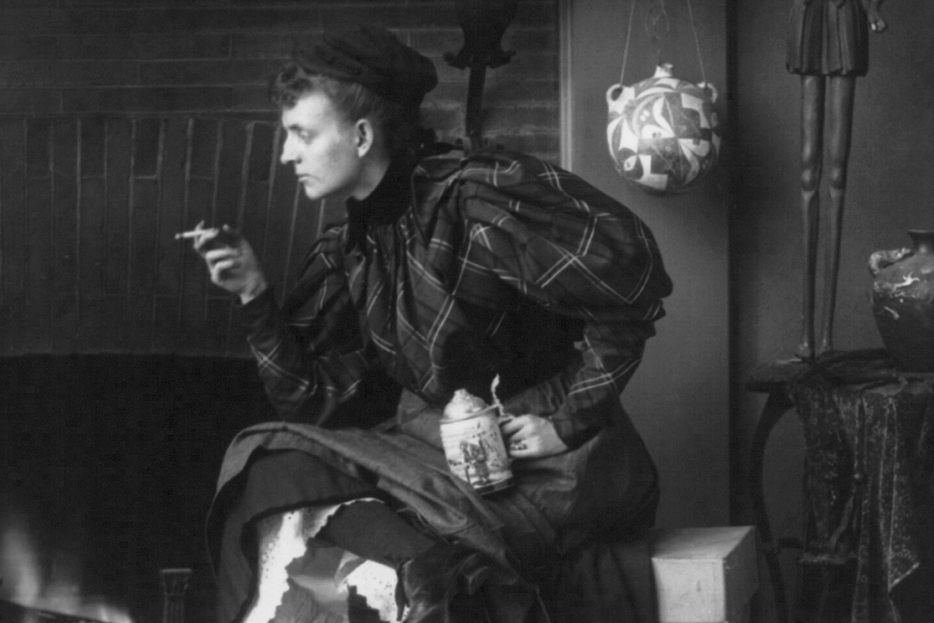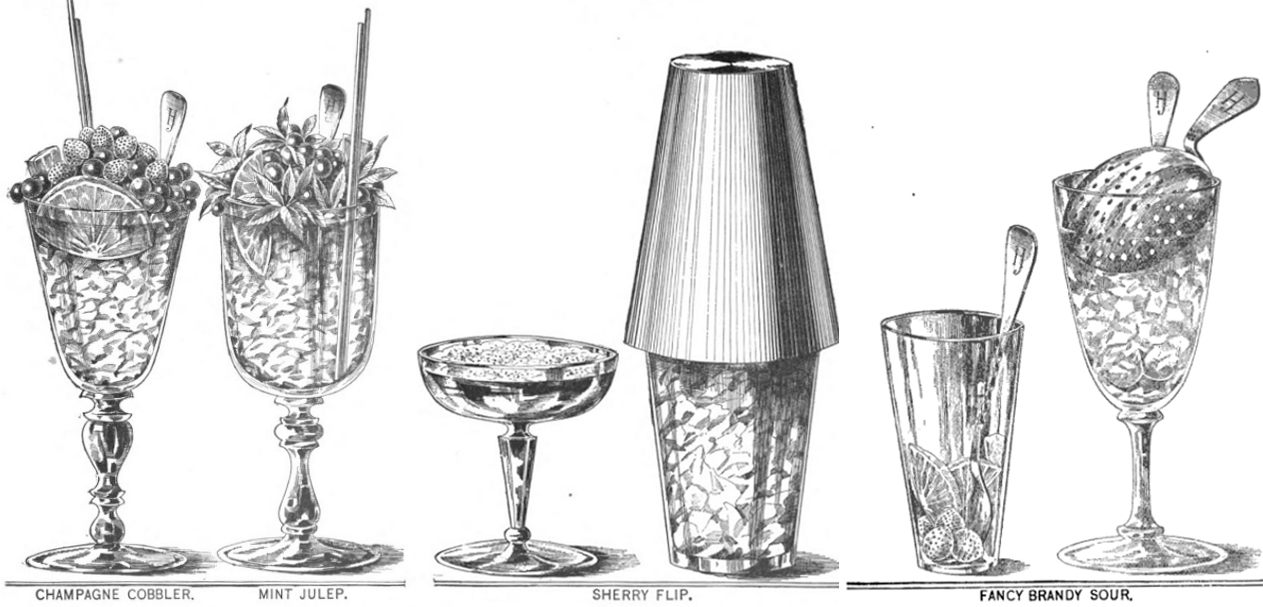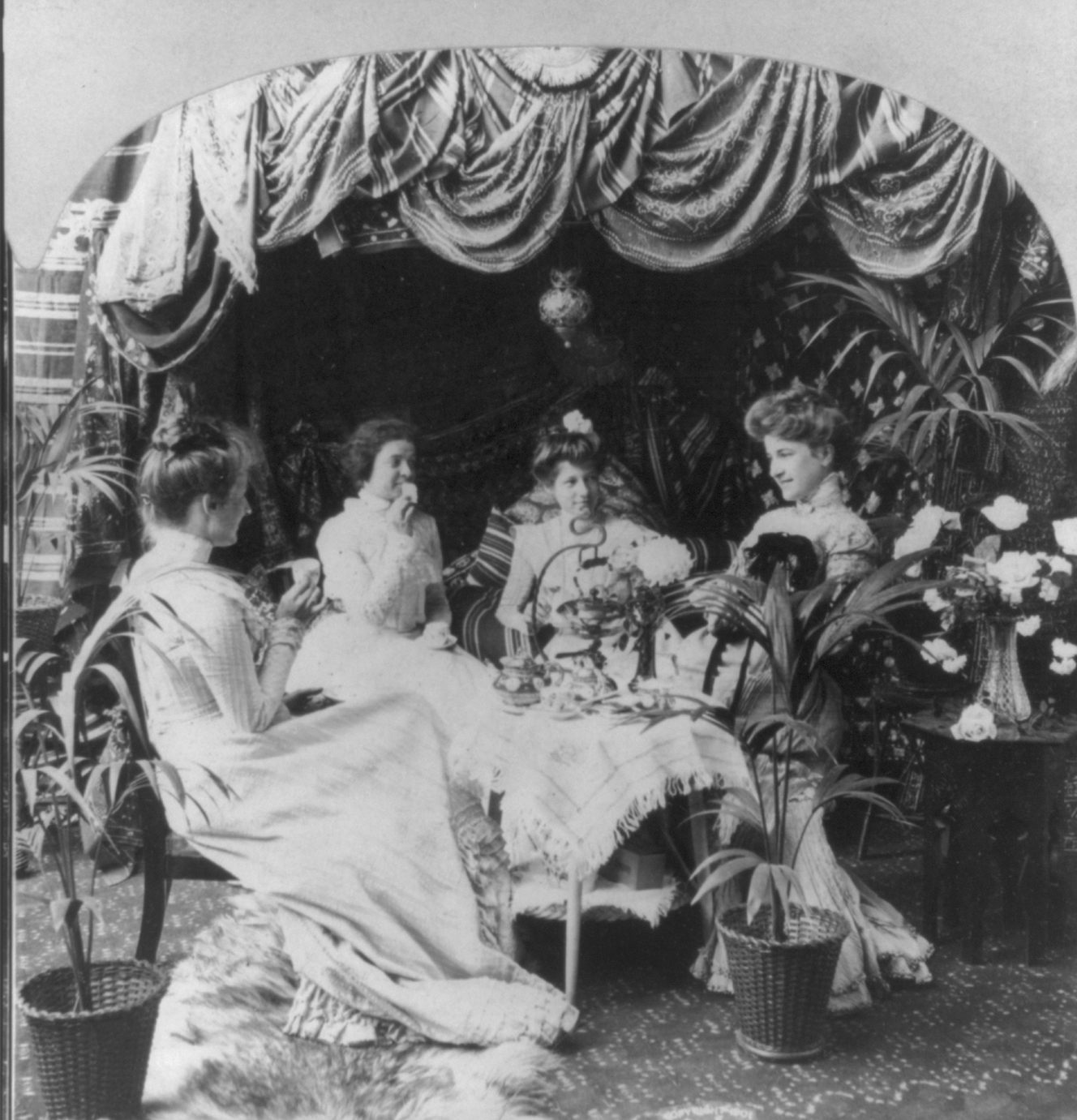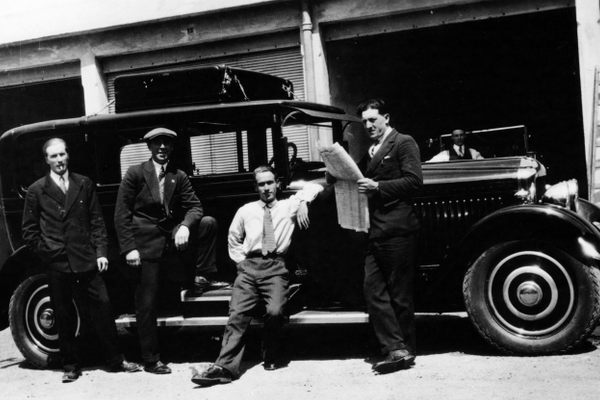Where the Cocktail Party Came From
It has surprisingly feminist origins.

Great cocktails go hand in hand with great stories. There are legends about the creation of the Sazerac, the Ramos Gin Fizz, even the Manhattan. But where’s the celebrated origin story of that iconic American pre-dinner drinking hour, the cocktail party? Sources disagree.
Alec Waugh (brother of the novelist Evelyn) insisted in a 1970 Esquire essay that he invented the idea of drinks-before-dinner in the 1920s. Others point to a Tacoma Times article from April 1917 crediting a St. Louis socialite, Mrs. Clara Bell Walsh, as the first to hold a party devoted exclusively to mixed drinks.
By this math, the venerable institution of the cocktail party is exactly a century old this year. But where are the parties celebrating the mixed-drinks centennial? Who was this mysterious cocktail maven anyway? And did she really invent the iconic party style, which Waugh defined as “start[ing] at half-past-five…lasts ninety minutes, at which alcohol is served but not much food”?
Walsh certainly couldn’t claim the invention of cocktails, which had been around for centuries by 1917. Early recipes for alcoholic punches date to the 1600s, but it was the publication of Jerry Thomas’ The Bartender’s Guide in 1862 that marked the birth of the modern cocktail craze. Although Thomas’ guide shows the diversity of cocktails available by the mid-19th century, he doesn’t provide any clues about how to throw a party with them.

Walsh’s mixed-drink mixer emerged from a collision of two distinct trends in American society. As the temperance movement gained power at the end of the 19th century, the availability of public drinking spaces like saloons and hotel bars shrank considerably, reorienting America’s drinking culture to the home. Simultaneously, American society began to shrug off its Victorian conventions. The era of the “New Woman,” lasting from the 1880s to the 1920s, was characterized by women uninterested in stuffy social constraints. New domestic labor-saving devices, such as gas stoves and electric irons, coincided with a move away from a house full of servants and cooks. Elaborate multi-course dinners, beloved during the Victorian age, fell dramatically out of fashion. As a 1906 woman’s guide put it, “Informal entertainment is, as everyone knows or ought to know, a far greater compliment to guests than any formal entertainment, however splendid.” Domestic manuals urged homemakers to shrug off big meals in favor of friendly get-togethers such as afternoon tea parties or receptions.
Casual events centered around the home grew popular, providing opportunities for men and women to socialize and enjoy a mixed drink or two. Hostesses weren’t obligated to provide full meals for guests, only drinks and light nibbles such as sandwiches and salads. As the 1901 Etiquette for All Occasions recommended, “Aerated waters, punch, wine-cup, and lemonade are thought sufficient. The time of the reception being from three until six or from four until seven o’clock, a heavy meal would be out of place.” The time of day, food, and mixed drinks of the 1900s afternoon tea embodied Waugh’s cocktail party definition in everything but name.

But the cocktail had a serious branding problem. Originally a simple mixture of spirits and bitters, cocktails were considered drinks only appropriate for men, too strong for a delicate Victorian woman’s sensibilities. Not that companies in the cocktail business didn’t try to change this. In 1897, the cocktail mixer company Heublein’s tried marketing specifically to women: “In the past the male sex were the only ones privileged to partake of the daintiest of American drinks, the ‘Cocktail.’ With the innovation of Club Cocktails it has been made possible for the gentler sex to satisfy its curiosity in regard to the concoction about which so much has been written and said, and which has heretofore not been obtainable by them.”
Despite Heublein’s best efforts, women continued to be discouraged from drinking cocktails. Social events where such libations were served were morally suspect. In 1903 temperance advocates condemned a party held by the actress Lillie Langtry, where “jeweled gin suckers” purchased cocktails at 50-60 cents a piece. According to Catherine Murdock’s book Domesticating Drink, cabarets and dance halls where alcoholic drinks were served were dangerous, tempting women to drink “Mamie Taylors, cocktails, and other insidious mixtures.”

But for the New Woman, such arguments fell on increasingly deaf ears. Whether in private or public, women were beginning to sip cocktails in ever greater numbers. The same year temperance supporters condemned Langtry, an article in the Chicago Chronicle admitted to the increasing trend of women drinking cocktails: “That many society women drink ardent spirits and sometimes to excess is a well-known fact.” Domestic manuals began to include recipes for harder mixed drinks. A 1909 edition of The Woman’s Dictionary and Encyclopedia, edited by American culinary expert Fannie Farmer, included recipes for 58 cocktails, including Sours, Martinis, and Manhattans.
The New Women of the 20th century, including one Clara Bell Walsh, took aim at the scandal-soaked image of the cocktail-drinking woman. As Owen Johnson’s 1913 The Salamander put it: “New ideas are stirring within [the modern woman], logical revolts—equality of burden with men, equality of opportunity and of pleasure.” Born in 1884, Walsh exemplified the economic and social independence desired by the new generation. Thanks to her father’s generous will, Clara was a millionaire before she turned 20. Even after her marriage to St. Louis businessman Julius S. Walsh Jr. in 1904, Clara’s personal finances allowed her to pursue her own interests, spending months away from home to race horses or travel to Europe.
As a prominent member of wealthy St. Louis society, Clara was in a position to free the cocktail from its immoral past. Updating the tradition of the informal afternoon tea, Walsh’s 1917 party brazenly swapped low alcohol punches and claret cups for Sazeracs and Clover Leafs. No longer the drinks of seedy dance halls, cocktails were now something any woman could enjoy without reproach. As the Tacoma Times put it:
“Positively the newest stunt in society is the giving of ‘cocktail parties’ … a Sunday matinee affair which originated here … filling a long felt Sunday want in society circles … Mrs. Walsh, because of her innovation has become more of a social celebrity in St. Louis than ever.”

Clara Bell Walsh’s party helped to promote the image of the sophisticated woman as a cocktail drinker. Just three years later, however, the introduction of Prohibition in 1920 brought any public cocktail-drinking to a roaring halt. But the mixed drinks mavens of the 1910s weren’t forgotten. The 1920s flappers who bobbed their hair, threw away their corsets, and sipped drinks at speakeasies saw Walsh and the New Women as inspirations for their new battle for female independence. As Vogue magazine put it in 1930:
“The really smart woman [is] apt to be an anti-prohibitionette…All have in common a certain freedom of mind which is bound to be characteristic of women who lead such crusades…It was such women who went out to fight for a vote…In the War, they drove ambulances as close to the front as possible. They are athletic. [They were] the first to drink cocktails…They pile up the qualities of mind and manner that make leaders.”

















Follow us on Twitter to get the latest on the world's hidden wonders.
Like us on Facebook to get the latest on the world's hidden wonders.
Follow us on Twitter Like us on Facebook